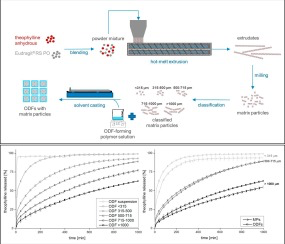- Home
- Blog
- News
- Basics
- Sources
- Agencies, Regulatory & Organisations
- CERSI Excipients Browser
- Excipient Report
- Excipient DMF List
- EXCiPACT Certified Companies
- Excipient Documentation
- Excipient EINECS Numbers
- Excipient E-Numbers
- FDA Inactive Ingredient List
- FDA GRAS Substances (SCOGS) Database
- IPEC Americas
- USP - U.S. Pharmacopeia
- Definitions
- Whitepapers / Publications
- Supplier
- Services
- Media
- Events
- 1st pharmaexcipients Poster Award
- Event Calendar
- Events featured by pharma-excipients
- 4th Annual Formulation & Drug Delivery Congress
- DDF Summit
- ExcipientFest Americas
- ExcipientFest Asia
- Global CompliancePanel
- International Conference and Exhibition on Pharmaceutics & Novel Drug Delivery Systems
- Formulation & Drug Delivery USA Congress
- Laboratory Medicine 2018
- Making Pharmaceuticals Europe
- Making Pharmaceuticals Exhibition
- Pharma Integrates
- PharmaExcipients China @CPhI China
- TTC Technology Training Center
- Jobs
- Online Sourcing
- Contact
13. September 2018
Orodispersible films (ODFs) provide high application comfort due to rapid disintegration in the oral cavity. They increasingly found the approval of pharmaceutical research and development and were added to the European Pharmacopeia in 2012. The European Pharmacopeia explicitly demands disintegration testing for ODFs, but does not refer to a suitable method. The aim of this study was to collect and evaluate existing disintegration methods regarding their suitability to investigate different ODF...
28. May 2018
Orodispersible films (ODFs) are an advantageous dosage form to accomplish patient convenience and compliance in oral drug delivery. They provide a number of special application features, such as the ease of administration without water and suitability for patients with swallowing problems. However, this promising dosage form has been limited to immediate release formulations so far. The aim of this study was to develop a thin film produced by solvent casting, which is rapidly disintegrating...
27. February 2017
Abstract Micronized cocrystal powders and amorphous spray-dried formulations were prepared and evaluated in vivo and in vitro as pulmonary absorption enhancement formulations of poorly soluble itraconazole (ITZ). ITZ cocrystals with succinic acid (SA) or l-tartaric acid (TA) with a particle size diameter of <2 μm were successfully micronized using the jet-milling system. The cocrystal crystalline morphologies observed using scanning electron microscopy (SEM) suggested particle shapes that...
22. November 2016
Abstract The surface of hydrophilic silica particles was modified with different concentrations (2, 4, 6, 8 and 10%) of γ-methacryloxypropyltrimethoxysilane (MPTS). The hydrophobicity and hygroscopicity of unmodified and modified silica were investigated through water contact angle (WCA) tests and dynamic vapor sorption (DVS) method, respectively. The results showed that the surface properties of silica were closely related with the MPTS concentration. Within the range of MPTS concentration...
20. September 2016
Abstract Formation of core-shell nanocomposites of Fenofibrate and Itraconazole, model poorly water soluble drugs, via fluidized bed (FB) coating of their well-stabilized high drug loaded nanosuspensions is investigated. Specifically, the extent of dissolution enhancement, when fine carrier particles (sub–50 μm) as opposed to the traditional large carrier particles (>300 μm) are used, is examined. This allows testing the hypothesis that greatly increased carrier surface area and more...
29. March 2016
In this study, we investigated the influence of deformability of specifically-engineered guest particles on the tensile strength of tablets of interactive mixtures. The binder polyvinylpyrrolidone (PVP) of different molecular weights were spray dried with l-leucine to create guest particle formulations. The guest particle formulations were characterized by their particle size, surface l-leucine concentration and glass transition temperature (Tg). These spray-dried particles were then blended...
26. September 2015
15. September 2015
13. September 2015
We investigated the feasibility of highly branched cyclic dextrin (HBCD) as an excipient matrix in dry powder inhalers (DPIs). The fine particles of HBCD and HBCD/active pharmaceutical ingredients (API) were prepared by spray-drying an ethanol-aqueous solution containing HBCD. More
09. September 2015
We investigated the feasibility of highly branched cyclic dextrin (HBCD) as an excipient matrix in dry powder inhalers (DPIs). The fine particles of HBCD and HBCD/active pharmaceutical ingredients (API) were prepared by spray-drying an ethanol-aqueous solution containing HBCD. More



